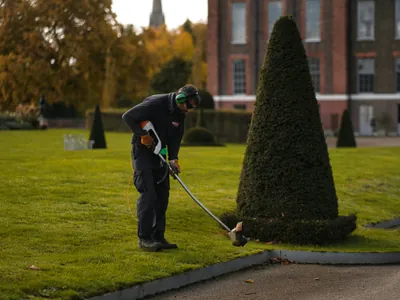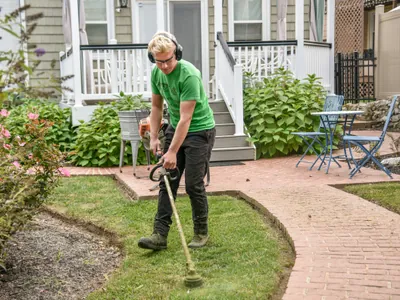Sustainable Landscaping: Eco-Friendly Garden Design

Sustainable landscaping creates beautiful outdoor spaces that work in harmony with nature. By choosing native plants, efficient irrigation, and eco-friendly materials, you can create a landscape that's both beautiful and environmentally responsible.
🌱 Native Plant Selection
Native plants are adapted to your local climate and soil conditions, making them easier to maintain and more beneficial to local wildlife.
💧 Efficient Irrigation Systems
Smart irrigation reduces water waste while ensuring your landscape stays healthy.
🌧️ Drip Irrigation
Delivers water directly to plant roots, minimizing evaporation and runoff
📊 Smart Controllers
Weather-based systems that adjust watering schedules automatically
Prevent watering during or after rainfall
Monitor soil conditions to water only when needed
🌍 Soil Health and Composting
Healthy soil is the foundation of sustainable landscaping and reduces the need for chemical fertilizers.
Good soil structure, organic matter content, and microbial activity are essential for plant health and reduce the need for synthetic fertilizers and pesticides.
Soil Improvement Practices
- Test soil pH and nutrient levels annually
- Add organic compost to improve soil structure
- Use mulch to retain moisture and suppress weeds
- Avoid chemical pesticides that harm beneficial insects
- Practice crop rotation in vegetable gardens
♻️ Eco-Friendly Materials
Choose sustainable materials for hardscaping and garden structures.
🔄 Recycled Materials
Use reclaimed wood, recycled stone, and recycled plastic for garden features
🌿 Permeable Surfaces
Allow water to infiltrate rather than run off, reducing stormwater issues
🏠 Local Materials
Source materials locally to reduce transportation emissions
🐝 Pollinator Gardens
Design gardens that support bees, butterflies, and other pollinators essential for ecosystem health.
🌳 Rain Gardens and Bioswales
Capture and manage stormwater runoff while creating beautiful landscape features.
Rain Garden Design
- Plant moisture-loving native plants
- Create shallow depressions to capture runoff
- Use layers of soil, sand, and gravel for filtration
- Include rocks and boulders for aesthetic appeal
- Position near downspouts or low areas
🗂️ Maintenance Planning
Develop a sustainable maintenance schedule that minimizes environmental impact.
🌿 Organic Practices
Use natural fertilizers, compost, and beneficial insects for pest control
♻️ Waste Reduction
Compost yard waste and recycle materials whenever possible
⚡ Energy Efficiency
Use electric or manual tools instead of gas-powered equipment
💰 Cost-Benefit Analysis
Sustainable landscaping often costs more initially but saves money over time.
🏆 Environmental Impact
Sustainable landscaping contributes to broader environmental goals.
Positive Environmental Effects
- Reduces urban heat island effect
- Improves air quality through carbon sequestration
- Supports biodiversity and wildlife conservation
- Reduces stormwater runoff and erosion
- Creates natural pest control through beneficial insects
Transform your outdoor space into a sustainable paradise that benefits both you and the environment. Contact The Box Advantage Group for expert sustainable landscaping design and installation services.


